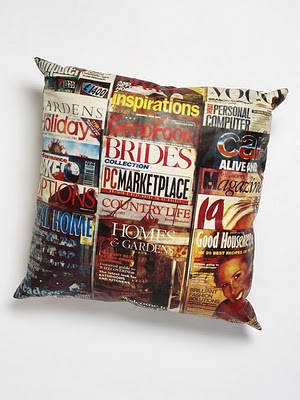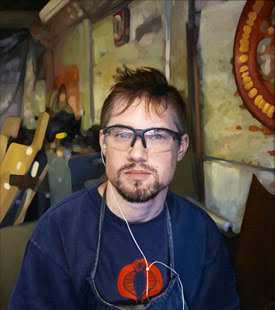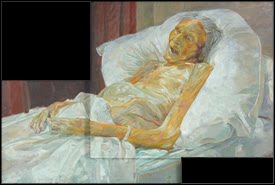Posts from the ‘art’ Category
Via V&A website: Woodrow is one of Britain’s best known contemporary artists who practices in a variety of media. He is well known for his sculptural installations made from waste goods, such as discarded cars and refrigerators. His interest in the fallout of a consumer-driven world can be seen in this piece, commissioned by the South London-based fabric printing studio, The London Printworks Trust, for an exhibition which addressed global migrations, the status of the refugee, and homelessness.
Tim II by David Eichenberg, 2009 © David Eichenberg
Harry by Michael Gaskell, 2010 © Michael Gaskell
Last Portrait of Mother by Daphne Todd, 2009 © Daphne Todd
This morning I had been reading Joan Didion, After Henry, in the collection of non-fiction, “We Tell Ourselves Stories In Order To Live, ” 2006. I went back to reread the following sentence after I came across these portraits:
I suppose that what I really wanted to say that day at my daughter’s school is that we never reach a point at which our lives lie before us as a clearly marked open road, never have and never should expect a map to the years ahead, never do close those circles that seem, at thirteen and fourteen and nineteen so urgently in need of closing (P 594).




Inspiration is as easy as action is difficult. Action takes effort. Just as it is easy to talk about how our new president inspires us, it is an entirely different thing–a momentous individual leap forward with no guarantees–to take action out of that inspiration.
There was a cat named Loki and a preoccupation with a guy named Thomas. I was casting a lot of runes. When I found Loki on my front step, he had a slight limp and for the first month or so he hobbled around and it seemed like I had a mechanical wind up toy for a pet. Later as he healed, Loki would try to escape to join the other three or four neighborhood cats that lined up on the sidewalk to meow at him. Loki would run circles around the living room, ending and starting on the back of the futon to meow back down at them. Loki had a name change to Carlyle Cat in the hopes of mellowing him out. We moved to a studio apartment to the Northside, a block from the beach. At first Loki made failed attempts at escape via the third floor balcony which would end with him on a ledge meowing loudly and then he eventually escaped to a farm downstate.






